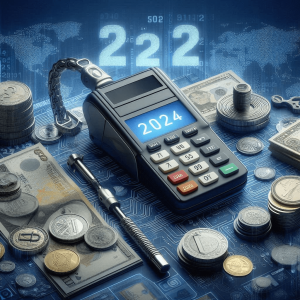- 7 minutes read
RBI Against Money Mules: Risks, Measures And Strategies For Safeguarding Banks
On Wednesday, July 3, 2024, the RBI Governor held a meeting in Mumbai with the Managing Directors and CEOs of both public and private sector banks. The main topic on the agenda was the growing concern over “mule accounts“. These accounts are used to receive or transfer illicit funds, enabling illegal money transfers and posing a significant threat to the financial system.

During the meeting, the RBI Governor highlighted the need to enhance governance standards, improve risk management techniques, and foster a strong compliance culture within banks. He stressed the importance of having robust cybersecurity controls and effectively managing third-party risks. Additionally, he called for increased efforts to combat fraudulent accounts and boost customer awareness and education initiatives to curb digital fraud.
Mule accounts violate multiple regulations and are prosecutable under the Prevention of Money Laundering Act (PMLA). They are also illegal under tax laws, and both SEBI and RBI regulations prohibit their use. Typically, these accounts are created by one person but operated by another, and are commonly used for money laundering and tax evasion. Currently, such frauds account for about 55% of all frauds in India.
In this article, we’ll delve into what mule accounts are, how they operate, and the steps being taken to combat them.
What Are Money Mules?
Money mules are unwitting individuals manipulated by criminals to illicitly move money. These individuals, often unaware of their involvement, receive funds in their accounts and then transfer them elsewhere, creating a convoluted trail that challenges authorities in tracing the illicit transactions.
Types Of Money Mules
- Willing Participants: Actively participating in criminal activities, these individuals knowingly engage in money laundering by applying for financial products with illicit intent.
- Duped Participants: Tricked by fraudsters, these individuals believe they are involved in legitimate money-moving businesses or assisting someone in a supposed emergency.
Industries Most Targeted By Money Mules
No industry is entirely safe from online fraud, but some face a higher risk due to the nature of their transactions. Here’s a quick overview:
Financial Institutions
- Banks, Credit Unions, Money Transfer Services: Handle large sums and are prime targets for money mules.
- Investment Firms and FinTech: Deal with high-net-worth clients and complex products, making them vulnerable to illicit activities.
Online Businesses
- E-commerce Platforms: Numerous transactions provide opportunities for criminals to disguise money laundering within legitimate purchases.
- Gaming Platforms: In-game currencies and microtransactions are used to move and launder illegal resources, often targeting young users.
- Online Marketplaces: Sites like eBay and Craigslist can be exploited to sell stolen goods, with funds funneled through mule bank accounts.
Other Vulnerable Sectors
- Real Estate: High-value transactions and complex inheritance processes can be manipulated for money laundering.
- Forex and Cryptocurrency Brokers: Anonymity and speed make these markets attractive for criminals moving and concealing illegal money.
Risks Associated with Money Mules
Money mules pose significant risks to financial institutions and the broader financial system. These risks include:
1- Money Laundering:
By transferring funds derived from criminal activities, such as drug trafficking or online scams, through their accounts, money launderers obscure the origin and ownership of the funds. This process allows criminals to integrate "dirty" money into the financial system, making it appear legitimate.
2- Cyber Risks:
Money mule activities often intersect with cybercrime, where individuals are recruited through phishing scams, social engineering, or malware to unknowingly assist in financial fraud. These schemes can compromise personal and financial data, leading to identity theft, financial loss for individuals, and reputational damage for financial institutions. Additionally, cybercriminals may exploit vulnerabilities in financial systems to facilitate money mule transactions, posing significant cybersecurity risks.
3- Compliance Risks:
Financial institutions must adhere to stringent regulatory requirements to combat money laundering and terrorist financing. Failure to identify and prevent money mule activities can result in regulatory penalties, fines, and reputational damage. Compliance with Anti-Money Laundering (AML) and Know Your Customer (KYC) regulations is critical to mitigate compliance risks associated with facilitating illicit financial activities.
4- Financial Losses:
Money mule activities facilitate fraud and money laundering, leading to substantial financial losses for institutions. In 2023 alone, global losses from money mule activities exceeded $10 billion. These losses stem from fraudulent transactions, stolen funds, and the costs associated with investigating and mitigating the impact.
5-Reputational Damage:
The public perception of being involved in illicit financial activities can erode customer trust and loyalty. Reputational damage may lead to a loss of business opportunities and difficulty in attracting new customers and investors.
Red Flags For Detecting Money Mule Activities
Financial institutions should be vigilant for key indicators of money mule operations as part of their Anti-Money Laundering (AML) strategies:
- Transaction Patterns: Money mule activities often involve multiple transactions that deviate from normal customer behavior. These transactions may lack an apparent purpose, involve transfers to high-risk jurisdictions, or exhibit unusual frequency.
- Transfer Origin and Destination: Watch for transfers to and from countries with weak AML controls, as these are common in money laundering schemes. For instance, Nigeria has been linked to significant laundering operations. Monitoring these transactions can help detect potential money mule accounts.
- Shell Companies: Criminals use shell companies to obscure the ownership of laundered funds. Money mules may be directed to create these companies, complicating AML tracking efforts. It's critical for firms to trace beneficial ownership through comprehensive due diligence or report suspicious entities to regulatory authorities.
What Can Banks And Financial Institutions Do To Tackle Money Mule Risks?
1- Customer Due Diligence (CDD):
Effective CDD processes are crucial for identifying and verifying customer identities and business activities. The process of establishing and verifying a customer’s identity and the nature of their business is a cornerstone of risk-based AML. Robust CDD helps in detecting money mules who may be opening accounts on behalf of third parties.
- Advanced Identity Verification: Go beyond the basics by adopting biometric authentication, utilizing document verification tools, and integrating information from public databases to develop a comprehensive understanding of customer identity and beneficial ownership.
- Customized Risk Assessment: Adjust your CDD and KYC measures according to individual risk profiles. Increase scrutiny for customers in high-risk jurisdictions or those displaying suspicious activity patterns.
- Ongoing Monitoring: The process continues after onboarding. Regularly update customer information, monitor changes in risk profiles, and maintain vigilance for money muling activities throughout the customer lifecycle.
ZIGRAM provides DueDiliger: Global research-based due diligence reports to determine potential red flags, covers more than 5000+ watchlists and checks. Download Free Reports from here.
2- Transaction Monitoring:
Continuous monitoring of customer transactions is essential to detect suspicious patterns indicative of money mule activities. This includes monitoring for unusual transaction volumes, frequencies, or patterns that deviate from the customer's normal behavior.
- Tailored Risk Framework: Develop a risk framework customized to your institution and clientele. Analyze transaction patterns, geographical nuances, and customer demographics to identify and evaluate potential risks associated with money muling.
- AI-powered Analytics: Utilize machine learning and artificial intelligence capabilities. Detect anomalies and suspicious patterns through real-time monitoring, ensuring proactive measures against evolving money mule tactics.
- Dynamic Rule Adaptation: Stay adaptable and responsive. Continuously update monitoring rules to reflect changes in money mule tactics and emerging trends.
ZIGRAM’s Transact Comply: Rule library powered transaction monitoring platform for enterprises. Book a free Demo from here.
3- Screening Measures:
Implementing screening measures for Politically Exposed Persons (PEPs) and other high-risk individuals can help identify potential connections to money mule networks. Enhanced screening helps in uncovering relationships that pose elevated risks. Money mules may be acting on behalf of PEPs or other high-risk individuals. Politically Exposed Persons and Sanctions screening measures should be implemented to help firms expose customers’ connections to high-risk individuals.
ZIGRAM’s Prescreening.io: Quick scan to identify and manage third party money laundering, financial crime and emerging risks. Book a Free demo here.
As the RBI Governor emphasized, enhancing communication strategies and raising customer awareness about the risks of money mule activities are crucial in preventing individuals from unknowingly participating in illegal activities. Financial institutions should also implement robust cybersecurity measures, such as securing systems from unauthorized access, using encryption protocols, and conducting regular vulnerability assessments.
Additionally, advanced fraud detection technologies, including AI-driven analytics and machine learning algorithms, should be used to identify and mitigate fraudulent accounts involved in money mule schemes.
Protect Your Financial Institution From Mule Activities
As banks and financial institutions implement robust Anti-Money Laundering (AML) and Counter-Terrorist Financing (CTF) measures, including thorough customer checks and ongoing transaction monitoring, they can more effectively identify and prevent illicit financial activities. Remaining vigilant and proactive will help these institutions safeguard their operations and maintain trust within the financial community.
ZIGRAM can help you with:
- Integrated RegTech that provides all checks AML checks, Sanctions screening, PEPs, watchlists.
- Real-time transaction monitoring
- Risk assessment, screening, and adverse media checks
Ready to learn more? Sign up to see how we can help with AML compliance.
- #RBI
- #Money_Mules
- #Banks
- #Compliance






